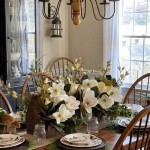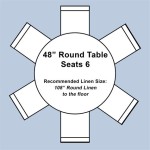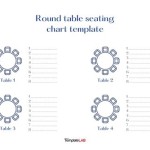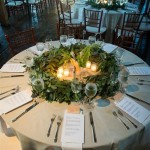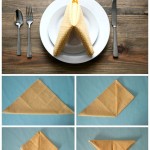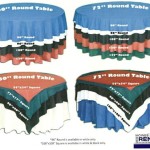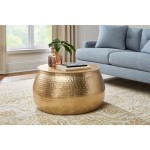How To Make A Photo Backdrop With Plastic Tablecloths For A Wedding
A wedding celebration often includes a dedicated space for capturing memorable photographs. A professionally designed photo booth can be costly, but a viable and cost-effective alternative is creating a DIY backdrop using plastic tablecloths. This project is budget-friendly, customizable to the wedding's theme, and relatively easy to execute with minimal crafting experience. The following outlines a comprehensive guide on making a photo backdrop using plastic tablecloths, providing a step-by-step process and considering various design elements.
The appeal of a plastic tablecloth backdrop lies in its simplicity and adaptability. Plastic tablecloths are readily available in a vast array of colors, allowing for seamless integration with the wedding's color palette. They are also lightweight, making them easy to hang and manipulate. Furthermore, their low cost allows for experimentation and iteration, ensuring the final product aligns perfectly with the desired aesthetic.
Before embarking on the crafting process, meticulous planning is essential. Determining the desired size of the backdrop, selecting appropriate colors, and gathering the necessary materials will contribute significantly to a smooth and efficient execution. Consider the location of the backdrop and the anticipated lighting conditions to ensure optimal photographic results.
Planning and Material Acquisition
The planning phase involves several key decisions. Firstly, the size of the backdrop needs to be determined. A standard size often ranges from 6 to 8 feet wide and 7 to 8 feet tall. This provides sufficient space for small groups of people to pose comfortably. The chosen size should also be proportional to the venue space where the backdrop will be placed. Insufficient backdrop size may lead to awkward framing in photographs, while an excessively large backdrop may overwhelm the space.
Next, color selection is paramount. Aligning the backdrop’s colors with the wedding's overall theme is crucial for visual harmony. Consider using a combination of complementary colors or varying shades of the same color to create depth and visual interest. For example, a rustic wedding theme might benefit from burlap-colored or earth-toned tablecloths, while a more modern theme could incorporate metallic or bold, contrasting colors. To ensure color accuracy, it is advisable to purchase tablecloths from the same retailer or brand to minimize variations in dye lots.
A comprehensive list of materials should be compiled to avoid interruptions during the construction process. The essential materials include:
*Plastic Tablecloths: The quantity will depend on the size of the backdrop and the desired density of the design. Typically, 5-10 tablecloths are sufficient for a standard-sized backdrop.
*Backdrop Stand or Support System: This could be a professional backdrop stand, a curtain rod, or even a sturdy wall. The selected support system must be capable of bearing the weight of the tablecloths.
*Scissors or Rotary Cutter: For cutting the tablecloths into desired shapes and sizes.
*Tape: Clear packing tape, painter's tape, or double-sided tape can be used for attaching the tablecloths to the support system. Consider the surface of the support system when selecting tape. Painter's tape is ideal for delicate surfaces to prevent damage.
*Optional Embellishments: Flowers (real or artificial), ribbons, balloons, fairy lights, or any other decorative elements that align with the wedding theme.
*Measuring Tape or Ruler: For accurate measurements and consistent cuts.
*Cutting Mat (Optional): To protect the work surface when using a rotary cutter.
Ensuring all necessary materials are readily available before commencing the project streamlines the process and minimizes potential delays.
Construction Techniques and Design Options
Once the planning is complete and materials are gathered, the construction process can begin. There are several techniques for attaching the tablecloths to the support system, each yielding a unique visual effect. The chosen technique will largely depend on the desired aesthetic and the level of intricacy required.
One common technique involves creating strips or fringe from the tablecloths. This can be achieved by cutting the tablecloths into long, vertical strips, leaving a solid section at the top for attachment. The width of the strips can be varied to create different textures and visual effects. Once the strips are cut, they can be attached to the support system using tape. Overlapping the strips creates a fuller, more voluminous backdrop.
Another popular technique involves creating a layered or ruffled effect. This can be achieved by folding the tablecloths in various ways and attaching them to the support system. For example, tablecloths can be folded in half or in thirds to create pleats or ruffles. These folded sections can then be taped or pinned to the backdrop, layering them to create a textured and visually appealing surface. Experimentation with different folding techniques and layering patterns can lead to unique and personalized designs.
A third technique involves creating a curtain-like effect. This can be achieved by attaching full tablecloths, or large sections of tablecloths, to the support system, allowing them to drape down. This technique is particularly effective for creating a simple yet elegant backdrop. Consider using different colors or textures of tablecloths to add visual interest to the curtain-like effect. Lightly gathering sections of the tablecloths can also create a more dynamic and flowing appearance.
Beyond the basic attachment techniques, consider incorporating design elements to enhance the visual appeal of the backdrop. These elements can include:
*Color Blocking: Using different colored tablecloths in distinct blocks or sections to create a bold and modern design.
*Ombre Effect: Gradually transitioning from one color to another, creating a smooth and visually appealing gradient.
*Patterning: Arranging the strips or folded sections in a specific pattern, such as stripes, chevrons, or geometric shapes.
*Textural Variation: Combining different textures of tablecloths, such as smooth and crinkled, to add depth and visual interest.
Remember to test the backdrop's appearance under the anticipated lighting conditions. This will ensure that the colors and textures are rendered accurately in photographs. Adjustments can be made to the design or lighting as needed to achieve the desired effect.
Securing and Embellishing the Backdrop
Once the tablecloths are attached and the basic design is in place, securing the backdrop and adding embellishments are the final steps. Ensuring the backdrop is securely fastened to the support system is crucial for preventing it from collapsing or shifting during the wedding celebration. Careful attention to detail during this stage will ensure the backdrop remains intact and visually appealing throughout the event.
The method of securing the backdrop will depend on the type of support system used. If using a backdrop stand, ensure the stand is stable and properly weighted. Secure the tablecloths to the stand using strong tape or clips. Regularly check the stability of the stand throughout the event and make adjustments as needed.
If using a curtain rod or similar support system, ensure the rod is securely mounted to the wall or ceiling. Use strong tape or hooks to attach the tablecloths to the rod. Consider using grommets or reinforcing the attachment points with fabric to prevent tearing. Regularly inspect the attachment points and make repairs as necessary.
Once the backdrop is securely fastened, it is time to add embellishments. These embellishments can enhance the visual appeal of the backdrop and further personalize it to the wedding's theme. Consider using:
*Flowers: Real or artificial flowers can be strategically placed throughout the backdrop to add color and texture. Attach the flowers using floral wire, glue, or tape. Consider using flowers that complement the wedding's floral arrangements.
*Ribbons: Streamers of ribbon in various colors and textures can be draped across the backdrop to create a festive and whimsical effect. Attach the ribbons using tape or pins. Consider using ribbons that match the wedding's colors or add a touch of sparkle with metallic ribbons.
*Balloons: Balloons can be clustered around the backdrop or arranged in elaborate arches or garlands. Attach the balloons using string or tape. Consider using balloons in the wedding's colors or add a personal touch with customized balloons featuring the couple's names or wedding date.
*Fairy Lights: Fairy lights can be woven throughout the backdrop to create a magical and romantic ambiance. Secure the lights using tape or clips. Battery-operated fairy lights are ideal for venues where electrical outlets are limited.
*Personalized Signs: Signs featuring the couple's names, wedding date, or a special message can be added to the backdrop to create a unique and memorable photo opportunity. The signs can be made from wood, cardboard, or fabric.
When adding embellishments, ensure they are securely attached and do not pose a safety hazard. Avoid using embellishments that are fragile or easily damaged. Also, consider how the embellishments will appear in photographs and adjust their placement accordingly. The goal is to create a visually appealing backdrop that enhances the overall photographic experience.
By meticulously planning, carefully constructing, and creatively embellishing, a stunning and personalized photo backdrop can be crafted using simple plastic tablecloths. This DIY project offers a cost-effective and customizable alternative to professional photo booths, adding a unique touch to the wedding celebration and providing lasting memories for the newlyweds and their guests.

Photo Booth Backdrop Makoodle

Diy Pinata Fringe Photo Backdrop A Kailo Chic Life

Photo Booth Backdrop Using Plastic Tablecloths Monica Lerma Rustic Table Setting Wedding Bathroom Inspiration Decor

Most Simple Easy Table Cover Backdrop Partydecorationideas Partyti Cloth Tiktok

D I Y Photo Booth Backdrop For 10 The Thinking Closet

Diy Pinata Fringe Photo Backdrop A Kailo Chic Life

Back Drop Using Curtain Rods And Plastic Table Cloths I Taped The To Make A Curta Tablecloth Backdrop Cover

D I Y Photo Booth Backdrop For 10 The Thinking Closet

Diy Pinata Fringe Photo Backdrop A Kailo Chic Life

Diy Party Background For 5 Or Less
Related Posts

